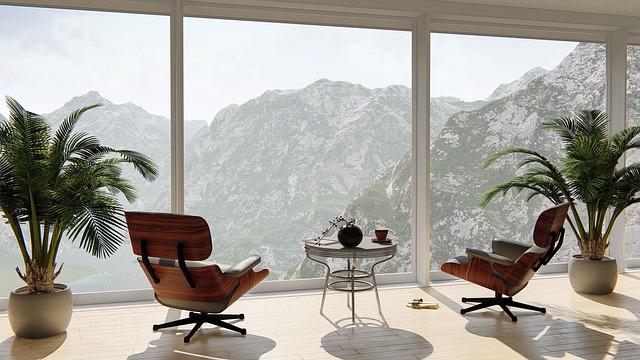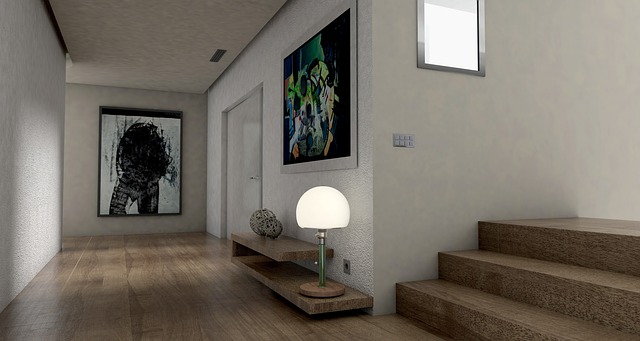Virtual reality (VR) and augmented reality (AR) have moved beyond niche entertainment into practical domains such as education, training, healthcare, and architecture. At the core of these immersive technologies lies the ability to create convincing three‑dimensional (3D) environments that respond to user actions in real time. The term “3D view” encapsulates the way users perceive depth, scale, and spatial relationships within a simulated space, and it is a critical measure of the quality and effectiveness of a VR or AR experience.
The Anatomy of a 3D View
A 3D view is constructed from a combination of geometric data, lighting, textures, and physics calculations. In VR, head‑mounted displays provide stereoscopic images that change with head movement, creating the illusion of depth. AR layers digital objects onto the camera feed, blending real and virtual geometry. Both modalities require precise calibration to align virtual and physical coordinate systems, ensuring that the 3D view feels natural and reduces user discomfort.
- Geometric fidelity: polygons, meshes, and subdivision surfaces.
- Lighting models: ambient, directional, and physically based rendering.
- Physics integration: collision detection, soft‑body dynamics, and haptic feedback.
Why Depth Matters in Simulation
Depth perception is a fundamental human sense; when a 3D view is poorly rendered, users may experience motion sickness or lose immersion. High‑quality depth cues—such as parallax, shading, and occlusion—are essential for tasks that rely on spatial judgments, like surgical simulation or architectural walkthroughs. Simulation designers must balance visual complexity with computational limits to maintain smooth frame rates, which directly affect the perceived stability of the 3D view.
“Without accurate depth cues, even the most realistic textures cannot compensate for a broken 3D view.”
VR: Immersive 3D Views in Isolation
In VR, the user is fully surrounded by a digital environment. The 3D view is controlled entirely by the headset’s sensors and the rendering engine. Advanced tracking systems, such as inside‑out or external lighthouse arrays, enable low‑latency pose estimation. The quality of the 3D view is measured by visual fidelity, motion fidelity, and interaction fidelity. VR simulation platforms—like Unity, Unreal, or custom engines—offer tools to sculpt high‑resolution 3D models, apply real‑time lighting, and incorporate physics-based animations.
Key Technologies Enhancing VR 3D Views
Several emerging technologies are pushing the boundaries of what can be achieved in a VR 3D view:
- Ray‑traced rendering: Provides accurate reflections and global illumination, improving realism.
- Temporal anti‑aliasing: Smooths edges over time, reducing flicker in high‑motion scenarios.
- Eye‑tracking: Enables foveated rendering, where only the focal point is rendered at full resolution, saving GPU resources.
AR: Layering 3D Views on Reality
Augmented reality blends digital objects with the physical world, requiring the 3D view to be precisely anchored to real‑world coordinates. The headset or mobile device must interpret camera input, identify surfaces, and maintain spatial mapping. A robust 3D view in AR relies on simultaneous localization and mapping (SLAM), which tracks the device’s position relative to its environment. High‑accuracy depth sensors, such as LiDAR or structured light, further refine the placement of virtual elements.
Challenges in Achieving Seamless AR 3D Views
Creating convincing AR 3D views presents unique hurdles:
- Occlusion handling: Determining when a virtual object should be hidden behind a real object.
- Lighting consistency: Matching virtual illumination to the dynamic lighting of the environment.
- Latency reduction: Keeping the AR view in sync with physical movement to avoid motion sickness.
Simulation Platforms and 3D View Pipelines
Simulation for VR and AR often follows a pipeline that transforms raw data into an interactive 3D view:
- Asset creation: Artists build 3D models using CAD or sculpting tools.
- Scene assembly: Designers place assets, set up lighting, and configure physics.
- Optimization: Level of detail (LOD) systems, occlusion culling, and texture compression reduce runtime overhead.
- Runtime rendering: Engines render the final 3D view, applying post‑processing effects such as bloom and depth of field.
Each step must preserve visual fidelity while keeping the frame rate above the threshold required for a comfortable 3D view, typically 90 frames per second for VR and 60 frames per second for AR.
Human Factors in 3D View Design
Even the most technically advanced 3D view can fail if it does not align with human perception. Cognitive load, visual fatigue, and motion sickness are real concerns. Design guidelines recommend maintaining consistent spatial references, avoiding rapid changes in depth, and providing visual cues that help users orient themselves within the virtual space. By prioritizing user experience, developers can ensure that the 3D view remains engaging and safe.
The Metaverse: A New Frontier for 3D Views
As the metaverse concept evolves, 3D views become the primary interface through which users interact with persistent virtual worlds. Scalability, interoperability, and cross‑platform consistency are essential. Advanced networking protocols like WebRTC and 5G enable real‑time updates to shared 3D views, allowing multiple users to coexist in a seamless environment. The metaverse demands that 3D views be not only realistic but also highly adaptable, accommodating diverse hardware from high‑end VR rigs to mobile AR glasses.
Emerging Standards for 3D View Exchange
Several initiatives aim to standardize 3D content and its rendering:
- glTF (GL Transmission Format): An open format for efficient transmission of 3D scenes and models.
- USD (Universal Scene Description): A framework for large‑scale scene composition and interchange.
- WebXR: A web‑based API that unifies VR and AR experiences across devices.
These standards streamline the creation of interoperable 3D views, accelerating metaverse development.
Future Directions in 3D View Innovation
Research continues to push the envelope of what a 3D view can achieve. Neural rendering, which uses deep learning to predict realistic images from sparse data, promises to reduce the need for heavy geometry while maintaining visual fidelity. Edge computing will shift more processing to localized servers, lowering latency for distributed 3D view rendering. Finally, advances in haptic and proprioceptive feedback will add new layers to the 3D view experience, allowing users to “feel” virtual objects with unprecedented realism.
Conclusion
Exploring the 3D view in simulation is more than a technical exercise; it is an interdisciplinary pursuit that blends computer graphics, human‑computer interaction, and emerging network technologies. Whether in VR, AR, or the metaverse, a compelling 3D view is the cornerstone that transforms abstract data into tangible experience. By understanding the fundamental components of depth perception, addressing human factors, and adopting evolving standards, creators can craft immersive environments that captivate users and open new horizons for learning, collaboration, and entertainment.



